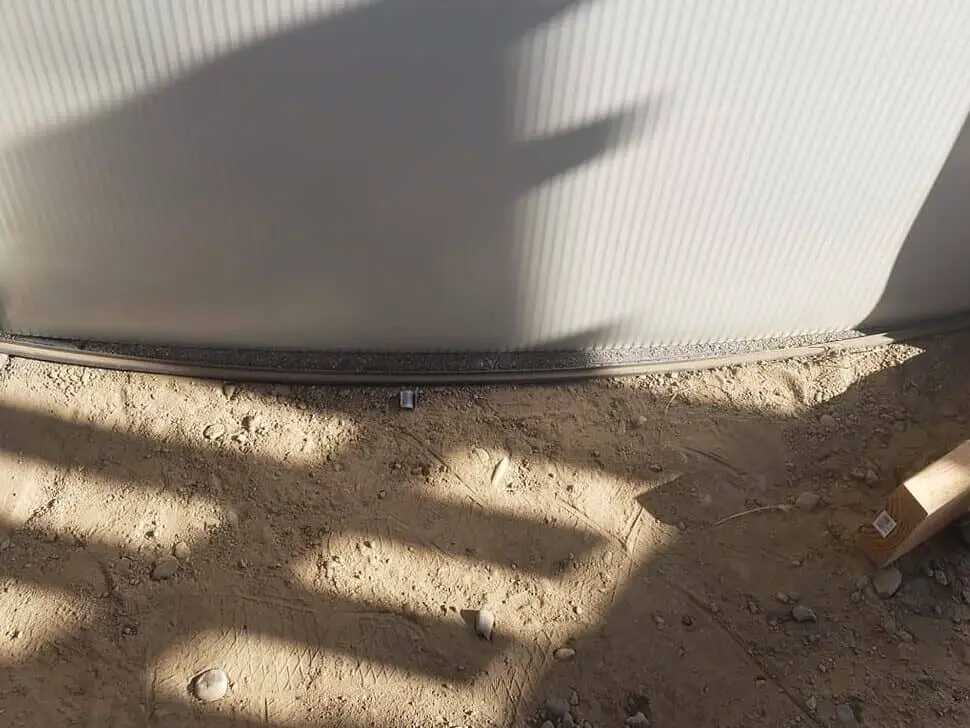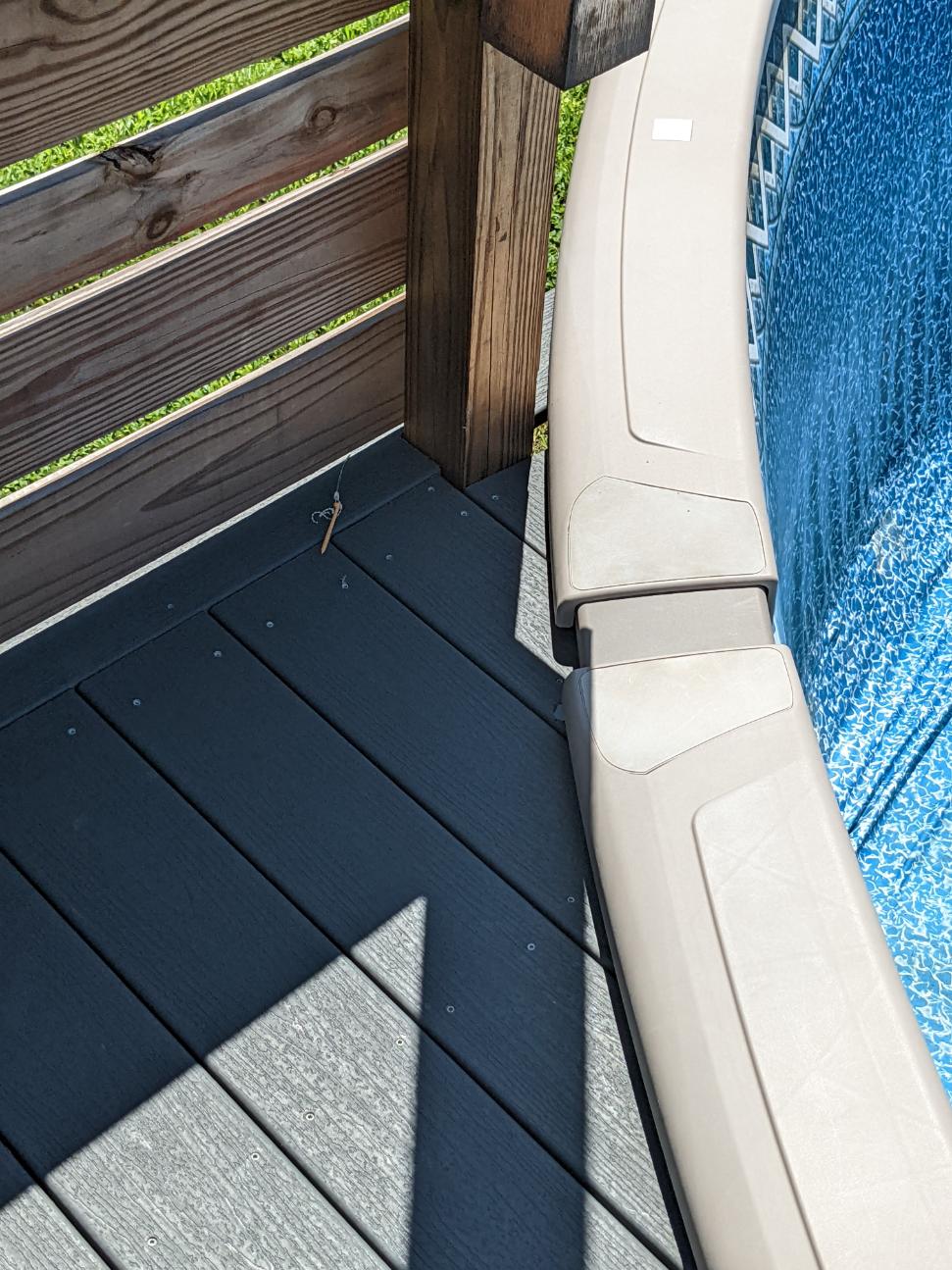Sand-type filters are very common with above-ground swimming pools. And although they are probably the easiest to clean, they do require backwashing.

Backwashing requires the use of some of the pool water going out of the pool and into the yard (or somewhere). Where this water goes can depend on the yard.
When deciding where to discharge backwash water from an above-ground pool, you should consider the treated pool water killing or browning the yard’s grass, killing certain plants, causing erosion, or flooding out your neighbor’s yard.
SO, WHAT DOES BACKWASHING MEAN ANYWAY?
If your pool has a sand-type or D.E.-type filter, the way to clean it is by doing a thing called backwashing.
During the filtering process, unfiltered pool water passes through the sand (in the filter tank) and has to go through fingers with tiny slits at the bottom of the sand mass. The sand traps unwanted things in the water (filters) allowing the filtered water to make it back to the pool through the tiny slits that sand can’t go through.
At some point, the sand in the tank gets dirty with all the things that it caught as the water travels through it and will have to be cleaned.
The way to clean the sand is by reversing the flow of water going through it. This reversal of water flow will break up the sand some and release all the trapped debris. This unwanted debris has to go somewhere. Since you can’t send it back to the pool, the water carrying the debris is sent out of the filter tank and into the yard.
This process is called “backwashing” because you are reversing the flow of water going through the sand which is backwashing debris away from the sand and out into the yard.
A D.E.-type filter needs this process of backwashing too. The difference is that the dirty DE powder goes out of the filter tank along with the debris and new powder has to be replaced.
WHERE SHOULD BACKWASH WATER GO?
Every yard is different so this depends on your yard, where the pool and filter are located, and what other components you have in your yard.
Some have a situation where they don’t need to send the water anywhere. They just allow the water to come out of the filter and spray out right next to the filter tank.
Most will need to use a backwash hose. This is a flat hose (that can be easily rolled up) that connects to the backwash fitting on the filter tank. This hose can be as much as two hundred feet long, so you can send the backwash water very far away if you choose.
Here are some places that backwash water should NOT go:
1. Where there is quality St Augustine-type grass
Certain yard grasses don’t do well holding chlorinated water and will brown the day after you dump pool water on it. And if you constantly put pool water on it, the grass will eventually die.
During my days of having a pool service company, I would have to dump backwash water onto the grass of certain yards as there was no other choice. With this, I would alternate where I would put it so as not to kill the grass in any one area.
2. Where it would flood out the neighbor’s yard
Some yards are small and limited where you can discharge pool water. For some, backwashing in the corner of the yard results in the water going over to the neighbor’s yard and temporarily flooding it.
Neighbors don’t like it when you flood their property. It may cause them issues like killing grass or plants, causing erosion, or allowing their dogs to get muddy and dirty.
Always be aware of where the backwash water is winding up and be a good neighbor by keeping it from damaging the yards around you.
3. Anywhere that causes erosion
I have seen so many areas of erosion caused by backwash water. Most of the time, it’s not serious, but can look ugly and contribute to a bigger issue later with heavy rains.
Erosion commonly starts small and gets worse. Watch where the backwash water goes and make sure it’s not causing a small river in the yard.
4. Areas with sensitive plants
Most plants can take chlorinated/treated pool water with no issues, but not all. If backwashing in a plant bed or plant area, pay some attention to how the plants fair a couple of days after the backwashing.
Some plants will die from excessive pool water, but not right away. So, if you like the plants that you are flooding with backwash water, then monitor them.
5. Areas that flood your yard
Although not as big of a deal, it’s a good idea to avoid letting backwash water go in areas of your yard where the water will stand (flood) for a while.
This may not matter to some, but dogs and kids walking in areas with standing water can make a mess by getting wet and tracking dirt and mud everywhere.
IF BACKWASHING A D.E. TYPE FILTER, BE AWARE THAT DIATOMACEOUS EARTH WILL ALSO BE GOING INTO THE YARD
D.E. type filters are the best-rated filters for swimming pools as they take out smaller particles than the other filter types. But with them, you do have to deal with diatomaceous earth (DE).
DE is the filter media that traps the debris from unfiltered pool water and works very well at this. The issue is that DE powder is toxic and will build up in the yard.
Every time you backwash a DE filter, you are sending 3-7 pounds (depending on the size of the filter) of diatomaceous earth into the yard. This can add up over time and cause issues with things growing in the area.
Also, DE powder looks harmless (like white flour), but is quite toxic to breathe in. So, when backwashed, it’s wet and somewhat harmless. But when it later dries, you don’t want your dogs or kids breathing it.
Keep this in mind when discharging your DE-type filter during the backwash.


